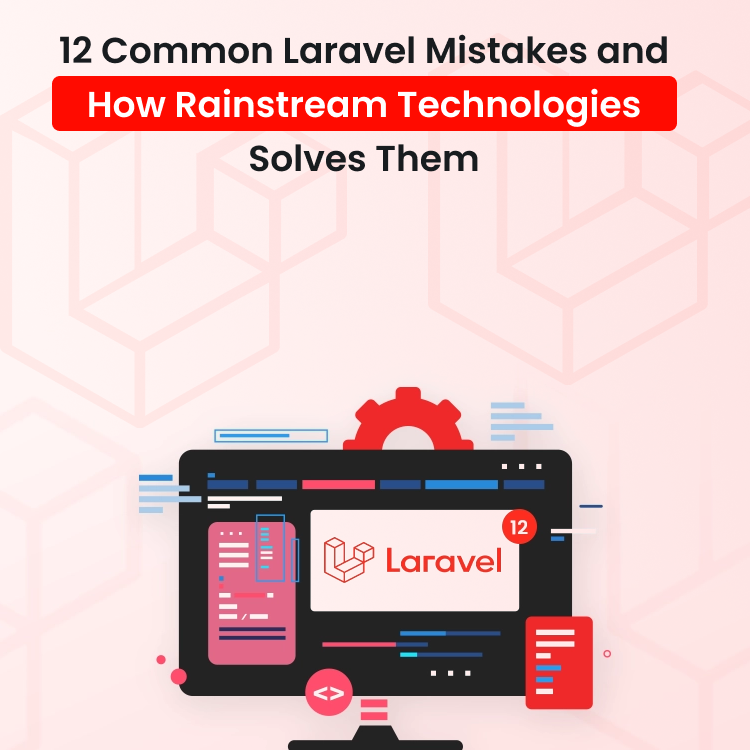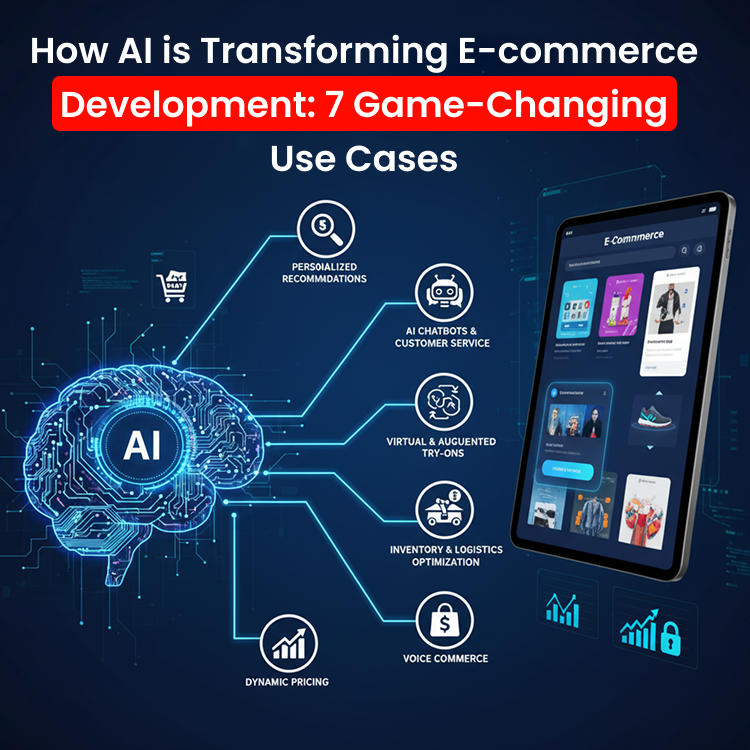

Quick Summary
Rainstream Technologies is a top React development company whose unrestricted environment of tools hastens development, enhances reliability, and provides scalable user experiences. This guide breaks down the top 10 React libraries and tools we use and why they matter to businesses, not just engineers.
Introduction
To companies interested in having a contemporary, sustainable web presence, engaging a ReactJS development company which has the appropriate tooling makes a measurable difference.
A skilled ReactJS agency does not simply write components; it uses tools that minimize time-to-market, enhance developer productivity and lower the total maintenance cost.
Let’s walk through the top React tools Rainstream Technologies uses on client projects and explain the business outcomes each delivers.
1. React Developer Tools (Chrome & Firefox Extension)
In complex React projects, both productivity and readability of your component graph and state flow can be the determinant. One of the most useful tools in the arsenal of a developer is React Developers Tools, which is an extension of both Chrome and Firefox.
This extension enables developers to explore component trees, real-time state and prop change monitoring, and trace data through the application. To a top ReactJS agency, these features are not merely conveniences but will directly determine the quickness, precision, and sustainability of each project.
As the developers debug or work to optimize the user interfaces, they can easily identify problems without having to waste hours scrolling through the source code.
The tool gives a running example of the React virtual DOM that allows developers to have insights into how component mounting, updating, and unmounting occur as users interact with this app.
This will result in fewer regressions, faster iterations, and eventually, reduced QA and testing cycles.
Business Benefits
- Faster debugging: issues are located faster, reducing billable hours.
- Better onboarding: new developers read component structure visually instead of hunting through code.
- Safer refactors: confirm prop flow and state quickly before pushing changes.
2. Redux Toolkit
Redux Toolkit simplifies global state management while enforcing best practices. It removes much of the boilerplate associated with traditional Redux.
Redux Toolkit streamlines the overhead of handling states by providing ready-made functions such as createSlice, createReducer, and createAsyncThunk, which enables users to do business programming instead of repetitive work on the boilerplate.
This prevents inconsistency, makes the state immutable, and greatly minimizes bugs that come about because the state was not structured.
The productivity side is immediate in terms of benefits. The developers will be able to write less code, will have cleaner logic, and new features will be introduced without interfering with current features.
Redux Toolkit can also be used with TypeScript with ease, and it enables more predictable and self-documenting codebases, which is the key to enterprise-level React applications.
Business Benefits
- Predictable scalability: as applications grow, having a robust state architecture prevents entropy.
- Reduced development time: built-in utilities (createSlice, createAsyncThunk) speed up common tasks.
- Lower maintenance overhead: standardized patterns make handovers between teams less risky.
3. React Query (TanStack Query)
Why we use it: React Query gives up the state management of the server (data fetching, caching, and synchronization). It allows developers to concentrate on UI and business logic and not to reinvent caching and stale-while-revalidate strategies.
Business Benefits
- Faster UX: automatic caching and background updates reduce perceived latency.
- Cost-efficient backend usage: smart refetching minimizes unnecessary API calls.
- Reliability in production: built-in retrying, pagination, and query invalidation reduce edge-case bugs.
4. React Router DOM
Why we use it: Routing forms the basis to any single-page application. React RouterDOM offers declarative, composable routing primitives which align better with UX requirements driven by URLs.
Business Benefits
- SEO-friendly navigation patterns (when combined with SSR approaches like Next.js) help organic discovery.
- Better analytics: consistent route structure simplifies event tracking and conversion analysis.
- Modular code splitting: route-based lazy loading reduces initial bundle size and improves performance.
5. Material-UI (MUI)
Why we use it: MUI is a well-established library of components used to create user interfaces and has theming tools that are accessible and production-ready. It accelerates the front-end development without reducing the quality of design.
Business Benefits
- Accelerated UI delivery: prebuilt components let the team concentrate on differentiating components rather than re-creating buttons and dialogs.
- Design consistency: global theming will offer a brand equality experience on both pages and platforms.
- Accessibility and compliance: MUI typically comes with numerous a11y considerations, which have lowered potential legal and UX risks.
Read also: Leveraging ReactJS for AI and ML-Driven Personalization in Web Apps
6. Styled Components
Why we use it: Styled Components allows CSS-in-JS with scoped styles and dynamic theming. When this is used with component-driven workflows, styles are localized and deterministic.
Business Benefits
- Faster design iterations: tweak styles at the component level without affecting global CSS.
- Lower CSS conflicts: removes class name collisions and reduces cross-team friction.
- Better brand agility: theme variables make it easy to implement multi-brand or white-label UIs.
7. Framer Motion
Why we use it: Micro-interactions and intentional movement play an important role in boosting perceived polish. Framer Motion is a React-based animation library that is already production-ready and contains straightforward APIs to code amazing effects with it.
Business Benefits
- Better conversion: the subtle animations will lead the users and lower the drop-off.
- Accelerated prototyping: it enables designers and developers to deploy interactive experiences in a short time.
- Performance-first animations: optimized for real-world apps to avoid jank on lower-end devices.
8. React Hook Form
Why we use it: Forms are everywhere, and complex forms are a major source of bugs and slow delivery. React Hook Form is a lightweight and performant form library that is compatible with validation schemas (Yup, Zod).
Business Benefits
- Reduced bundle size and faster forms: minimal re-renders improve responsiveness.
- Fewer validation bugs: centralized, testable validation reduces support tickets.
- Quicker time-to-market: develop complicated checkout, signup, or data-entry pages quicker and with confidence.
9. Next.js
Why we use it: Next.js is the full-stack React framework that supports server-side rendering (SSR), static generation, incremental static regeneration (ISR), and new routing. Next.js is the default in cases of clients requiring SEO, first loads quick, and hybrid rendering.
Business Benefits
- Better SEO and initial paint: SSR and SSG options help pages index and load faster.
- Scalability for enterprise: built-in image optimization, API routes, and edge functions simplify infrastructure.
- Reduced TCO: fewer bespoke backend pieces for rendering or caching lowers operational complexity.
10. Axios
Why we use it: Axios is an advanced HTTP client which features request/response interception, cancellation, and reliable error handling. It is easy and effective for small applications and complex integrations.
Business Benefits
- Consistent API layer: centralizing HTTP logic reduces duplicated error handling.
- Easier integration with monitoring: interceptors make it straightforward to report outages or latency spikes to observability tools.
- Improved reliability: retry and cancellation strategies lower user-facing failures.
Internal Processes & Automation
At Rainstream Technologies we don’t just pick libraries; we build processes around them. Small automation (CI checks, code generation, shared component libraries) compounds time savings.
The Bottom Line
The right toolkit transforms React development from “build” into “deliver.” When you work with a React development agency like Rainstream Technologies, you receive not the code but a more tool-oriented method that reduces the cause of risk, decreases timelines, and enhances the quality of a product.
It is these tools that we use to make our projects fast, maintainable, and production ready. If you’re planning a React project and want a partner that understands both engineering and business impact, contact Rainstream Technologies today.
Being one of the top ReactJS development company, we will perform an audit of your existing stack, propose some optimizations, and deploy solutions with the assistance of tools mentioned in this guide to speed up delivery and achieve better results.
Willing to move faster without compromising quality? Reach out. Rainstream Technologies is a leading ReactJS agency that delivers speed, reliability, and excellence in every release.
FAQs
Q1: What is the impact on time-to-market with the selection of the appropriate stack?
By selecting a stack that is more productivity friendly (e.g., Next.js + React Query + MUI), the productivity can save on duplication of effort and typical plumbing exercises.
The result: faster prototypes that are production-grade, meaning business stakeholders see value sooner and iteration cycles shorten.
Q2: Does it support apps of enterprise scale?
Absolutely. Libraries such as Redux Toolkit, Next.js, and React Query are created to be scalable. These tools facilitate performance, observability, and team development when used along with sound architecture (modular code, typed contracts, CI/CD).
Q3: What criteria do you use to assess the tool to use on a new project?
Our core values are business results: performance, developer productivity, maintenance cost, and security. Proof-of-concept is used commonly as a short-lived (1-2 weeks) step that justifies a decision before making it permanent in the parent code.
Q4: Are there hidden costs to adopting third-party libraries?
There can be licensing, upgrade effort, or ecosystem drift. That’s why a top ReactJS agency evaluates long-term maintenance and community health before adding a dependency.





